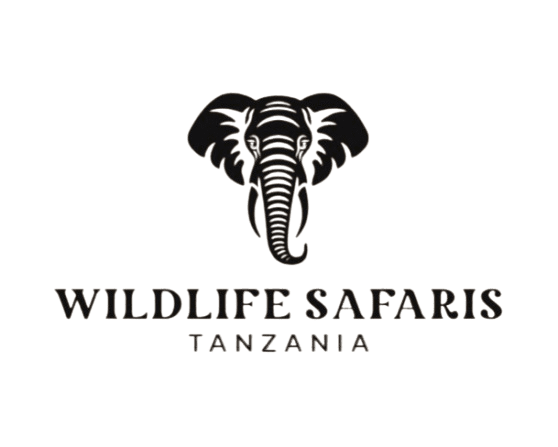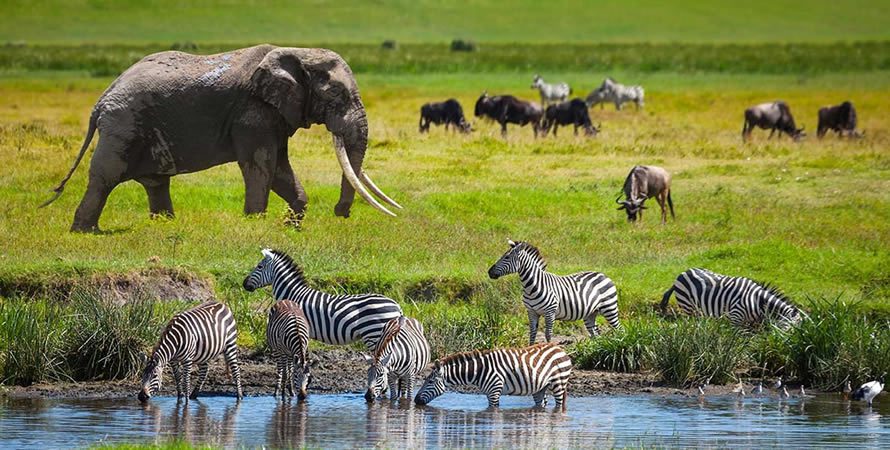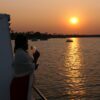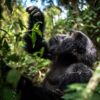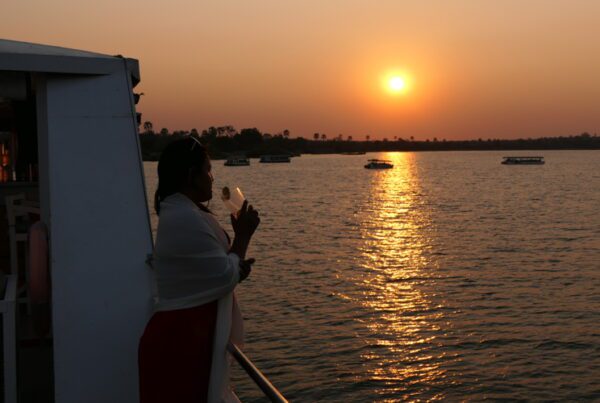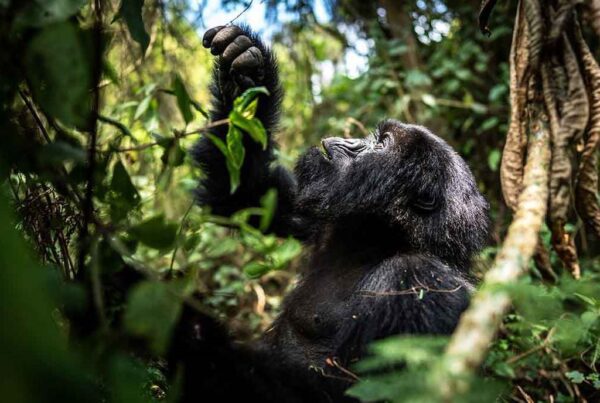Serengeti or Nyerere, which is better?
Tanzania is a country where visitors have to make tough choices about places to visit. Picture this, on one side, you have the Serengeti – the world-famous destination perfectly known for the wildebeest migration, the Big Five, and countless wildlife encounters. And on the other hand, the Nyerere – a less-visited, yet wildlife-rich park south of Tanzania, where you’ll enjoy less competition. For many, Serengeti wins, but for avid travelers, it’s very difficult to decide. In this article, we compare these two parks in detail. Let’s explore.
Accessibility: Serengeti vs Nyerere.
Serengeti lies in the North of Tanzania, a safari zone preferred by many adventurers and wildlife explorers. We can simply put it this way: Serengeti is the most accessible wildlife park in Tanzania. You can simply get there by flying or driving. Serengeti has over seven airstrips – Seronera, Grumeti, Lobo, Kogatende, Fort Ikoma, and Serengeti South. Travelers on fly-in safaris can simply fly from Arusha, Dar es Salaam, and Zanzibar – the main entry safari points – or from other destinations like Ruaha, Tarangire, Lake Manyara, and Nyerere. For those on drive-in safaris, Serengeti has six entry gates, with Naabi Hill (east), Ndabaka (west), and Klein’s Gate (northeast) being the most common. Driving from Arusha takes 5-6 hours through Ngorongoro to the Naabi Hill Gate, while driving from Mwanza takes around 6-7 hours through the Ndabaka Gate.
Nyerere (formerly Selous) lies in the southern part of Tanzania, where only a few visitors go. It’s remote, and unlike Serengeti, Nyerere is easily accessed from Dar es Salaam, Tanzania’s largest business capital. Flights from Dar es Salaam Airport take only 45 minutes to arrive at one of its airstrips – Mtemere, Matambwe, Sumbazi, Kiba, Beho Beho, and Siwandu. Driving from Dar es Salaam is possible, with the drive taking around 6 hours.
Top attractions: Serengeti vs Nyerere.
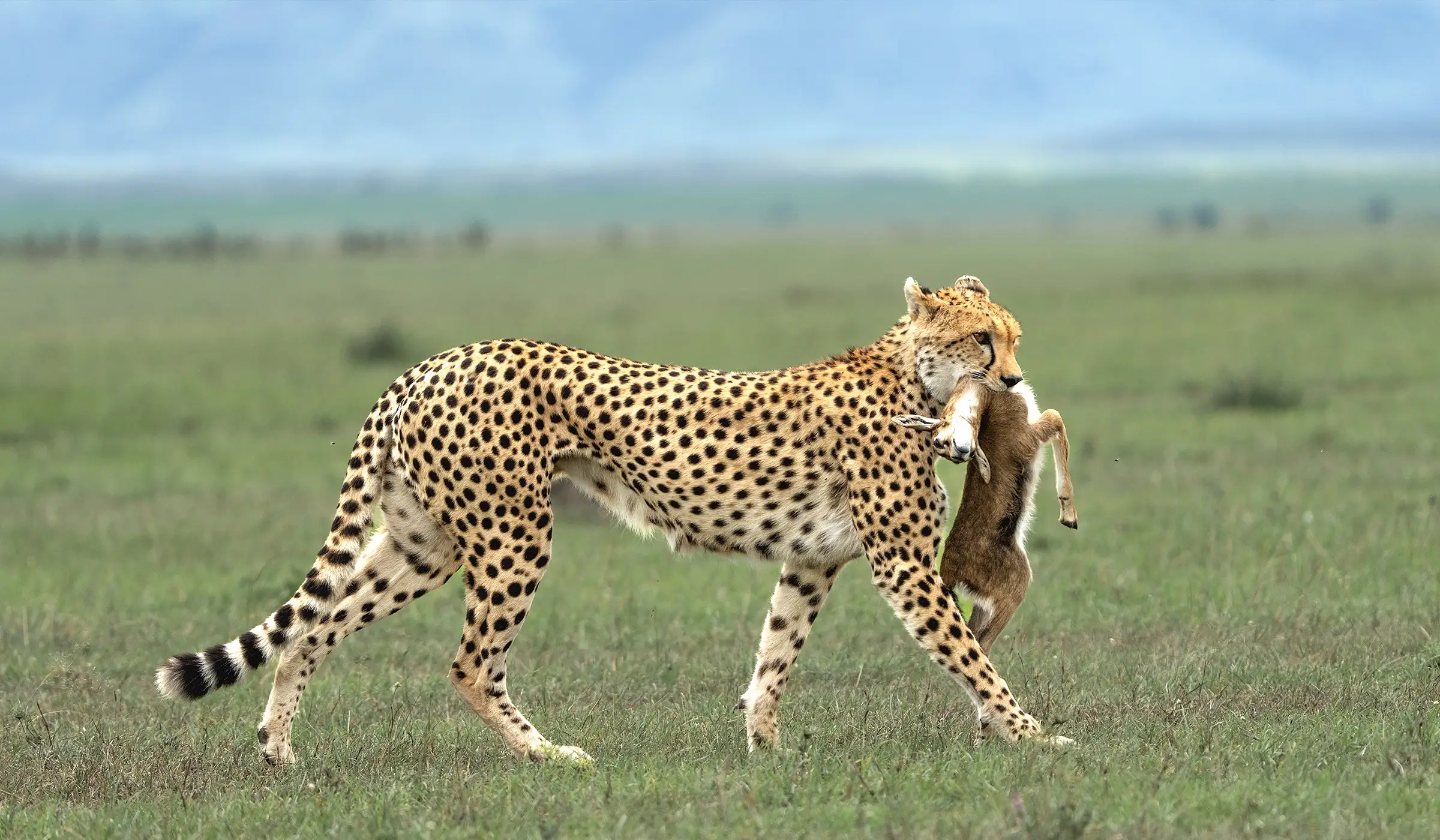 The Great Migration is a natural event that makes the Serengeti famous worldwide. This park, together with the Masai Mara, forms the vast Serengeti-Mara ecosystem. Animals – mainly wildebeest and zebras – move from the south to the north, hoping to find green grazing grounds. Happening every year, this event features breathtaking scenes, from the birth of over 500,000 calves in the southern plains to the dramatic crossings of the Mara River. The Serengeti is also the best spot to see all the Big Five. Named so by the big game hunters, these animals roam the wide, stretched plains in abundance, except for the black rhino, whose encounters are rare and only confined to certain locations (like the Moru Kopjes). Serengeti is also a haven for predators, that’s lions, leopards, cheetahs, spotted hyenas, and small carnivores like bat-eared foxes, jackals, wildcats, and serval cats.
The Great Migration is a natural event that makes the Serengeti famous worldwide. This park, together with the Masai Mara, forms the vast Serengeti-Mara ecosystem. Animals – mainly wildebeest and zebras – move from the south to the north, hoping to find green grazing grounds. Happening every year, this event features breathtaking scenes, from the birth of over 500,000 calves in the southern plains to the dramatic crossings of the Mara River. The Serengeti is also the best spot to see all the Big Five. Named so by the big game hunters, these animals roam the wide, stretched plains in abundance, except for the black rhino, whose encounters are rare and only confined to certain locations (like the Moru Kopjes). Serengeti is also a haven for predators, that’s lions, leopards, cheetahs, spotted hyenas, and small carnivores like bat-eared foxes, jackals, wildcats, and serval cats.
Nyerere, Africa’s largest standalone park, has no animal migration. But it’s a refuge for the rare African hunting dog, with common encounters compared to the Serengeti. There’s more remote, undisturbed wildlife in Nyerere National Park compared to the Serengeti, where crowds are common, especially in the high season. There are chances to spot all the Big Five in the Nyerere. Lions, elephants, leopards, and buffalo may be common in most game drives, but seeing a black rhino is a bit of luck. So, for a Big Five safari, we recommend the Serengeti.
Safari activities: Nyerere vs Serengeti.
Game drives, balloon safaris, and walking safaris are traditional safari activities commonly offered in the Serengeti. Some guests may book for additional things like bush meals and stargazing. Here, you will experience day game drives only. Balloon adventures are perfect for appreciating the landscape and trekking Great Migration. Nature walks offer an intimate, down-to-nature experience to discover small creatures that are difficult to see from the height of a safari vehicle.
In Nyerere, you can do other activities in addition to game drives, balloon safaris, and walking safaris. The mighty Rufiji River – the largest river in Tanzania – offers some of the peaceful adventures, including boat cruising. This activity allows you to float comfortably on the crystal-clear waters while watching hippos, crocodiles, and river birds. Moreover, most camps offer fly camping. This experience enables you to sleep under the stars while listening to the sounds of nature – the rustles and ripples of the river. Night safaris are also available on request, unlike in the Serengeti, where they are prohibited in the main park.
Safari camps: Nyerere vs Serengeti.
Serengeti has a lot of places to stay. The central Serengeti has a record-breaking concentration of lodges and camps than other regions. Here, you will find large, spacious lodges and hotels, some with over 50 rooms. This park also has its very own kind of camps found nowhere in the globe: mobile camps. These camps are special for front-row seats to the wildebeest migration. They move seasonally next to the migration herds, from the south, to central, to the west, and finally to the north.
Nyerere also has a few camps compared to the Serengeti. Most of them are small and luxurious, with around 10 rooms. Families and couples can enjoy privacy and intimacy in the middle of the African bush. In addition, these camps offer additional activities like night drives and fly camping.
Which one is better?
That depends on your interests. If the wildebeest migration is your favorite sight, then pick the Serengeti. But if you’re looking for a quiet, budget-friendly destination, Nyerere National Park. Plus, we are here to assist you through the planning process. Reach out to our expert safari planners for more advice on your Tanzania safari.
